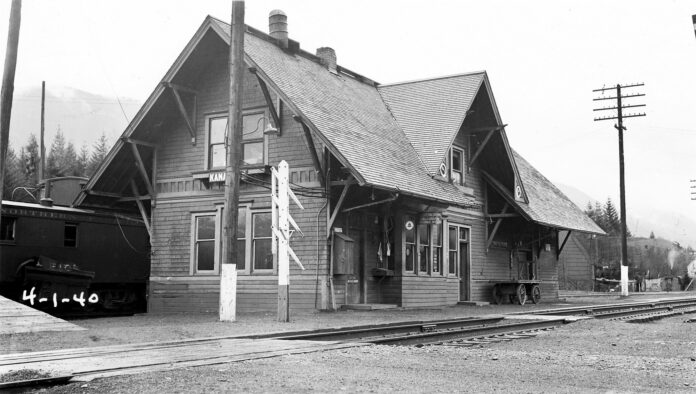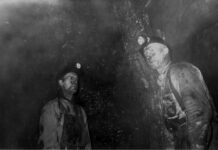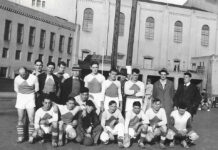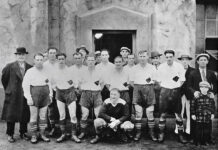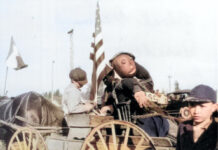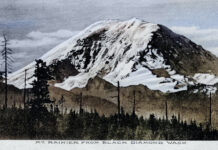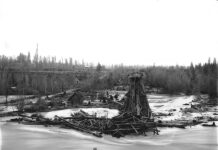This photo of the Kanaskat railroad station was taken by the King County Assessor on April 1, 1940. The two-story building’s dimensions were 20’ x 68’ feet, or 1,360 square feet spread amongst seven rooms. Living quarters for the station agent were upstairs. The station house was constructed in 1900 by the Northern Pacific Railway Co. Much of the Victorian-style building was clad with shingles and heated by a coal and wood stove.
Groundbreaking of the Northern Pacific (N.P.) railroad began in 1870 near Duluth, Minnesota, a western port town on Lake Superior. N.P.’s push westward toward Tacoma was aided by a separate line they constructed that began in Kalama in 1872 and reached Tacoma one year later. It was extended in 1877 through Puyallup and Orting to the east Pierce County coal fields around Wilkeson and Carbonado. The final connecting leg from Stampede Pass wound down the Green River to Palmer on its way through Cumberland, Enumclaw, Buckley, and South Prairie where it connected to the Wilkeson-Carbonado branch in 1887.
In 1888, N.P. began constructing a branch line that crossed the Green River and headed north through Durham, Kangley, Selleck, Barneston, and Kerriston, intending to connect with another branch at Snoqualmie Falls. In 1900, N.P. completed a more stoutly constructed bridge from Palmer that passed by the newly established Kanaskat station. Palmer was named for a Northern Pacific surveyor named George Palmer. While Kanaskat came from a Yakima Indian sub-chief who had a wife here, as well as two back in Yakima. The first depot, circa 1887, was in Palmer.
The 1900 rail line headed west through a new coal mining operation named after its founding investor, John Leary. Leary was soon renamed Ravensdale when N.P.’s coal mining subsidiary, Northwestern Improvement Company purchased the property and ran it as a company town. The route became known as the Palmer Cutoff and is still used by Burlington Northern Sante Fe Railway. Today, it’s normally for eastbound trains of empty cars that have unloaded their freight of coal, grain, and petroleum products at Seattle and Tacoma ports. However, it could be used for westward trains if the Stevens Pass or Columbia Gorge routes were blocked.
Kanaskat’s ornate Victorian Station burned to the ground on December 30, 1943, when the night telegraph operator, Gordon Trahanes filled the coal stove, opened the draft and damper, then fell asleep. Though his father was the N.P. section foreman at Castle Rock, Gordon Trahanes was fired one week later. The station was replaced by a round-roof boxcar, which was succeeded in 1947 by a solid brick station. In 1959, the U.S. Army Corps of Engineers utilizing the reverse blueprint of the 1947 structure built yet another station. Thus, the Kanaskat had the dubious distinction of being home to four rail stations. Next week’s column will feature the station built after this one burned down.
Railroad historian David Sprau, who joined N.P. in 1960 and later worked for Burlington Northern, provided many factual details for this column. Sprau was a proud resident of the Kanaskat area for 38 years. Photo enhancements were undertaken by Boomer Burnham, a Tahoma photography instructor doing business as http://www.boomersphotography.com/

